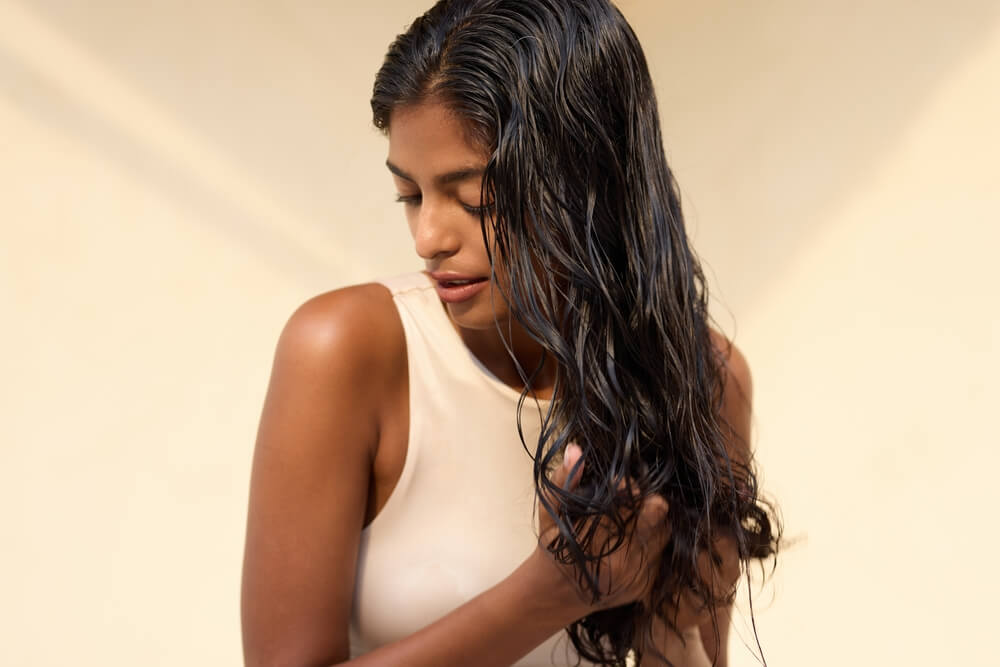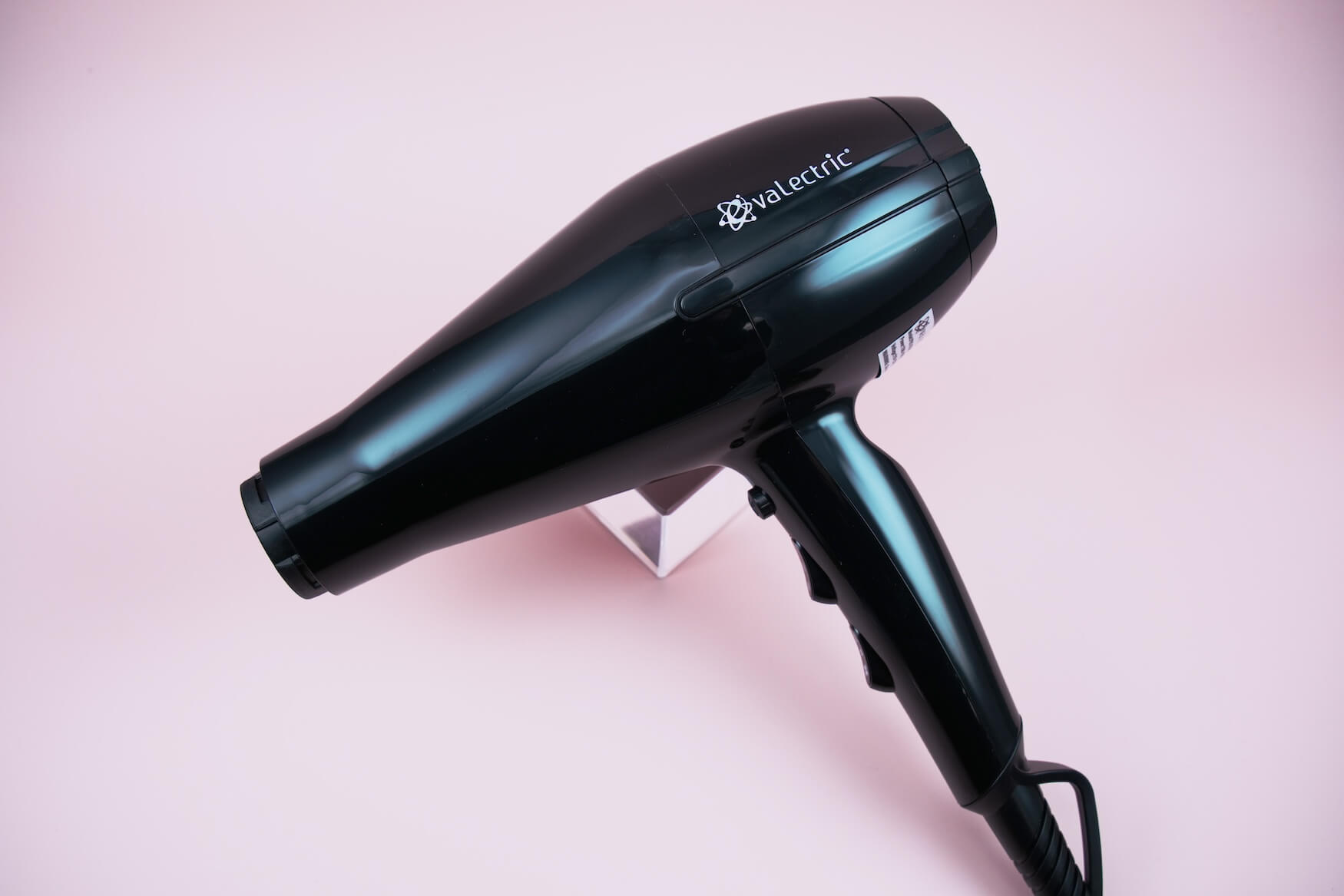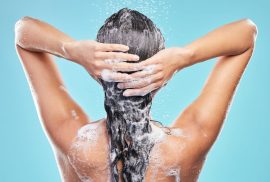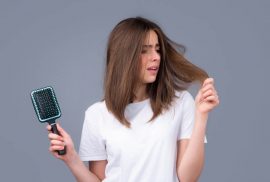8 Hair Care Myths That Are Actually Holding You Back

There are so many hair care myths floating around out there, and while some may seem completely outrageous, others are surprisingly believable. However, take in the wrong information when it comes to your hair and you could end up doing some serious damage to your locks.
So, today, Evalectric is going to set a few things straight. Here are eight hair care myths that you need to stop believing right now!
Myth 1: It’s Impossible to Heat Style Without Damaging Your Hair
One of the most commonly perpetuated hair care myths is that it’s impossible to heat style your hair without damaging it at the same time. After all, heat styling means applying excessive heat to your strands, and isn’t that always a bad thing?
The Truth

While it’s true that heat styling can damage your hair, this is certainly not always the case. Take certain precautions before and during heat styling, and you’ll be able to do so without damaging the integrity of your hair.
A heat protectant is the first step. You should also only use styling tools that offer an adjustable temperature. This way, you’ll be able to figure out the lowest amount of heat needed to style your hair, so that you don’t expose your strands to more heat than necessary. From the Baby Pink Classic Styler 1.25” to the Grande Styling Wand, you’ll find an adjustable temperature dial integrated into most of Evalectric’s styling tools.
Your styling technique is important too. Work quickly and efficiently, avoiding running your styling tool over the same section of hair too many times. Once you’re done, give your hair time to cool and set before doing anything else to it.
Myth 2: Air Drying is Better for Your Hair Than Blow Drying
This hair care myth stems from the one above. People who believe that heat styling is always damaging also think that air drying is better for their hair than blow drying. After all, blow drying is technically a form of heat styling, so why subject your hair to that heat if the air around you can do the same job?
The Truth

Once again, heat styling isn’t always bad! In fact, studies have found that if you really want to reduce how much damage you cause to your hair, you should dry it with a blow dryer, holding it 15cm away from your hair and keeping it in continuous motion. It all comes down to how the hair is so susceptible to damage when it’s wet, much more so than when a blow dryer is used.
With that said, the same rules apply when picking a blow dryer. Only use models that have variable speed and temperature settings, so that you can tailor your blow dry to your hair type. The Evalectric Pro Beauty Dryer would be a great one to turn to!
Myth 3: Oily Hair Doesn’t Need to Be Conditioned
One hair care myth that people with oily hair often share is that their hair type doesn’t need to be conditioned. After all, if your hair is already naturally oilier than normal, then surely this in itself acts as a conditioner? Why would you want to add more oil into the mix?
The Truth
The truth is, conditioning your hair isn’t solely about adding oil. In fact, there are plenty of oil-free conditioners out there, although some oils can actually be beneficial for oily hair.
Instead, conditioning is also about giving your hair some extra hydration. Your strands need moisture to thrive, and this is what a conditioner provides.
If you find that conditioners tend to weigh your hair down, look for lightweight formulas that are designed specifically for oily hair. Keep it focused on just the ends of your hair, and rinse thoroughly once you’re done. A clarifying shampoo every week or two will also help to remove any residue that your conditioner has left behind.
Myth 4: If You Use a Shampoo for More Than a Few Months, It Will Become Less Effective
Some people assert that, after a few months of using a shampoo, your hair will become immune to that product. In turn, this supposedly causes the shampoo to stop working on your hair quite so effectively. For this reason, they recommend switching up your shampoo every few months, rather than sticking with one formula.
The Truth
While there’s nothing wrong with swapping which hair care products you use, don’t do so solely because you’re worried about your hair becoming immune to them. This simply isn’t true! If you’ve found a shampoo that works well for you, then, by all means, stick with it.
With that said, this myth likely arose due to seasonal changes calling for different hair care products. Every few months, the seasons change, and so do your hair’s needs. In the winter, it requires more moisture, whereas the summer months call for lighter products, hence why it can sometimes be beneficial to alter which formulas you use.
Myth 5: Rinsing Hair With Apple Cider Vinegar Will Make It Look Shiny
Apple cider vinegar has been in the spotlight lately. Touted as a cure-all for everything from inflammation to acne, some people also recommend using it on the hair. They claim that it will leave the hair feeling healthier, giving it a shinier finish.
The Truth
As you know, apple cider vinegar is extremely acidic. Not only can it strip the hair of its protective oils, exacerbating dryness and breakages, but it can also fade hair color and irritate the scalp.
Yes, apple cider vinegar has a clarifying effect, but so do clarifying shampoos. If you’re looking for a way to add shine to your hair, find a shine-boosting hair serum that isn’t going to cause any problems for your strands or your scalp.
Myth 6: Wearing a Hat Causes Hair Thinning/Loss
Do you worry about wearing a hat, even in bad weather, because you’re worried about the damage it could be causing to your hair? Many people think that the friction caused when a hat rubs against the head/hair causes the hair to thin/fall out.
The Truth
Your hair grows from hair follicles – something that most hats do not influence whatsoever. Yes, wearing an overly tight hat for an extended period of time could put pressure on those follicles, but, in most cases, a hat isn’t going to directly cause your hair to fall.
Instead, a hat can actually help to protect your hair, especially in harsh weather. Whether your locks are being damaged by UV rays, cold temperatures, bitter winds, or anything else that the environment is throwing at you, a hat forms a physical barrier between your locks and the world around them. This helps to shield them from potential harm.
Myth 7: Hair Should Be Brushed With at Least 100 Strokes a Day
This hair care myth is one that has been passed through the generations. In fact, you may even remember your mother or grandmother telling you about it when you were a child. Either way, it has had a big impact, with many people growing up to believe that they need to brush their hair with a minimum of 100 strokes a day if they want to keep their mane looking fresh and healthy.
The Truth
Back in the day, this advice may have had some value. When people didn’t wash their hair quite as frequently as they do now, they relied on brushing to help spread natural oils and remove dirt. It’s very likely that an average of 100 strokes a day was needed in order to properly do this.
Today, however, that’s no longer necessary. Not only do we wash our hair more frequently than our ancestors did, but modern-day shampoos are also much more powerful. You shouldn’t need to brush dirt out of your hair, meaning that 100 strokes is overkill. In fact, aim for 100 a day, and you could end up damaging your hair by over-brushing it.
Instead, brush your hair until it doesn’t need to be brushed anymore. Whether this requires 20 strokes or 50, brush your strands until you’ve removed tangles and distributed those natural oils. Once that’s done, you should stop, even if you haven’t counted to 100 yet!
Myth 8: Dandruff is a Sign of a Dry Scalp
With dandruff causing flakes to fall from the scalp, it’s understandable why many assume that dandruff is linked to dryness. After all, dryness also causes flaky skin, along with the itching that’s commonly associated with dandruff.
The Truth
Many are surprised to learn that dandruff is actually tied to an oily scalp, rather than a dry scalp. There’s a fungus called Malassezia that flourishes in scalp oil. This means that the oilier your scalp, the more likely you are to experience dandruff. Yes, dryness can cause flaking too, but those flakes tend to be small, dry, and white, whereas the flakes that are caused by dandruff are usually larger, oilier, and yellowish.
Distinguishing between the two is important because the treatments for each are very different. If you truly have dandruff, an anti-dandruff shampoo will help to target the fungus that’s residing on your scalp. On the other hand, if your issue is a dry scalp, an anti-dandruff shampoo isn’t going to help. You’ll need to pamper your scalp with moisturizing treatments to counter that dryness.
Debunking Hair Care Myths With Evalectric
If you want to give your hair the best possible care, you need to make sure that you have all of your facts straight. Abiding by any of the above hair care myths will only hold you back and could also potentially damage your locks in the process. To keep your strands safe, always do plenty of research to ensure that the advice you’re following is legit.
Click here to shop for more bestselling hair care and styling products from Evalectric.






